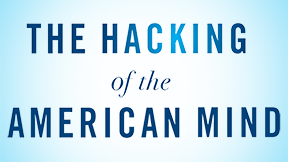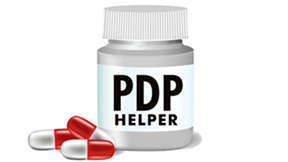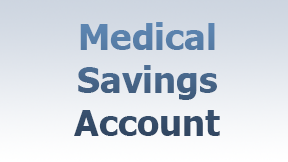 Background: Chapter 5 and 6 are the final chapters of Part 2 which deals with reward, dopamine, and addiction. Lustig’s writing is fairly technical; I’ll do my best to summarize his explanations into layman’s language.
Background: Chapter 5 and 6 are the final chapters of Part 2 which deals with reward, dopamine, and addiction. Lustig’s writing is fairly technical; I’ll do my best to summarize his explanations into layman’s language.
Lustig begins the chapter by explaining that there’s a price to be paid for reward. It used to be in terms of dollars, but now it’s measured in neurons. Substances, sugar for example, that trigger a dopamine response are now cheap. It’s not a special once-a-year treat. The dopamine receptors in our brains are fragile. Although they like to be “tickled,” these receptors don’t want to be bludgeoned to death.
If you open the dopamine floodgates repeatedly, these neurons have some fail-safe methods built-in to protect themselves.
The over-stimulation of these cells (neurons) leads to cell damage or death, termed excitotoxicity.
My Comments: Dr Russell Blaylock has written a book titled Excitotoxins: The Taste That Kills. You can guess the main theme of his book. Various forms of sugar as well as artificial sweeteners such as aspartame (Equal) and sucralose (Splenda) are toxic substances to critical parts of our brains.
The Firing Squad
Chronic stimulation of your neurons results in cell death, and that’s not good for you. Your brain would continue to get fried. However, nature has provided you some protection against this process, notice some protection.
Ligand (molecules that bind to receptors such as dopamine or cortisol) almost uniformly down regulate their own receptors all over the body.
Put another way, the receptors don’t work as well. The cells don’t respond as well. You need more to get less.
Lustig calls this tolerance. The receiving neuron is becoming tolerant to the excessive stimulus. He says that this occurrence is both good and bad. It’s good because your neurons aren’t dead. It’s bad because you are going to need more of the substance to get the same reward.
My comments: Instead of one doughnut, it’s two or three. Instead of one beer, it’s multiple cans or bottles.
Continuing: Lustig says that tolerance is when a chemical binds to a receptor. This is also true with pharmaceutical drugs. The problem comes in when the stimulations overstimulates the neurons.
Pickling Your Brain
He says that every substance and behavior that drives up your reward triggers will just as quickly drive down your reward receptors. He cites the alcoholic that seemingly can consume more booze than a non-alcoholic as his liver metabolizes the alcohol faster than the non-alcoholic. He explains that this is the reason why drug addicts can easily overdose. First, they are in a period of abstinence, maybe due to treatment or being in jail. Next, they resume with their previous dose, but they no longer have the same level of tolerance. Then they overdose, and for some, it’s fatal.
In essence, he’s saying that one is literally burning up his neurons, and that he’ll never reach the same level or reward as before. He just doesn’t have the machinery to do so, ever! Lusting describes the motto of those in recovery from illicit substances: Once a cucumber becomes a pickle, it never will be a cucumber again.
He cites another problem, and that is withdrawal. Changes in your neurons has occurred. The acute cessation of many of these substances leads to withdrawal. Lustig says that the withdrawal symptoms can be from caffeine, alcohol, narcotics, and tranquilizers. He describes various symptoms in detail.
There can also be emotional withdrawal from cocaine, marijuana, and ecstasy. These symptoms include anxiety, restlessness, irritability, insomnia, headaches, poor concentration, depression, and social isolation. Tolerance and withdrawal are the classic two-headed hydra of the definition of addiction.
Lustig discusses how want turns into need for the addict. The addict will turn to crime to get money to get his fix, and this often includes harming family members.
Are Addictive Behaviors Really Addictive?
Lustig then segues to discussing whether or not behaviors, such as gambling, are addictive. He cited the American Psychological Association (APA) which said that for decades behaviors were not addictive. The reason for their stance was that since the criteria for addiction was both tolerance and withdrawal, there was lack of withdrawal if the behavior ceased. The APA has since changed its position in saying that behaviors can be addictive in certain circumstances.
Addiction Transfer
What happens if a person can’t get his favorite fix? Lustig points out that if a person’s dopamine pump is primed, it’s waiting to be fired, for something, anything. He says that people abstaining from one substance will frequently become users of another substance. He describes smoke filled rooms of AA meetings.
The Real Thing
Lustig recounts the story of John Pemberton, an Atlanta pharmacist. By 1886 he invented a formula using carbonation, and this concoction later became known as Coca Cola. Pemberton placed his first ad for his new carbonated drink in the Atlanta Journal. People came to his pharmacy to imbibe. The pharmacy had special equipment to carbonize the beverage, and this became known as the soda fountain.
My comments: I can remember back in the 1950s visiting the soda fountain at the old Thrifty Drug Store in Burbank, California. There were the stools for the customers, and you could order burgers, fries, malts, and of course, soda pop. The new Thrifty built in the 1960s on an adjacent lot phased out the old soda fountain. I always wondered why a pharmacy had a “soda fountain.” Now I know. It was a carry-over from the late 1800s. Wasam’s Drug in Clarkston, Washington still has their soda fountain that caters to the morning coffee crowd.
Continuing: Pemberton had Civil War injuries which resulted in him becoming a morphine addict following the war. To wean himself off his morphine addiction, he developed a concoction which included cocaine, alcohol, caffeine, and sugar. As Lustig puts it, these were four weaker dopamine/reward drugs, to take the place of one very strong one. Pemberton mixed those four with carbonated water.
Due to the growing temperance movement in the South following the war, Pemberton removed the alcohol from his formula., Due to being sick and penniless, he sold his formula to an Atlanta businessman by the name of Asa Candler for a paltry $2,500. Candler later developed Pemberton’s concoction into the most famous brand in the world. Pemberton died that same year, sick, in pain, and still addicted to morphine. Lustig points out that none of the sordid story of John Pemberton is revealed at the Coca Cola museum in Atlanta.
The federal government required the removal of cocaine from Coca Cola in 1903 leaving just the sugar and caffeine. Did that scuttle Candler’s carbonated drink? No, the two remaining substances were still enough to maintain the hook! Lustig asks a rhetorical question: Why do you think Starbucks sells Frappuccinos?
My comment: No wonder Lustig mentioned Frappuccinos. Depending if they use regular cream or fat-free “cream”, this beverage has about 60 to 90% of its calories from sugar!
Continuing: Coca Cola is in every country in the world except for North Korea. Lustig says that Coca Cola is the most recognized brand on the globe and for good reason:
It’s a delivery vehicle that mainlines two addictive compounds straight to your nucleus accumbens. Sugar just happens to be the cheapest of our many substances of abuse. But all of those substances do essentially the same thing. By driving dopamine release, they all acutely drive reward, and in the process, they drive consumption. Yet, when taken to extreme, every stimulator of reward can result in addiction.
Cost of addictive substances:
- Heroin or cocaine: You need lots of cash
- Alcohol and nicotine: You need an I.D.
- Sugar: You need a quarter or a cookie from Grandma
Lustig describes sugar as the cheap thrill and the reward that everyone on the planet is exposed to and the reward that’s affordable.
Everyone’s an addict, all your relatives are pushers. And it’s only one of two addictive substances that are legal and generally available. (the other one being caffeine). That’s why soda is such a big seller; it’s two addictive substances in one.
My Comments: I can personally testify that sugar is addictive as I became addicted to it an adolescent. Oh yes, I’ve gone through the cravings of wanting something sweet. Fortunately, I abused my health when I was young, and hopefully there have been no long-lasting effects from my past carelessness. The deceptive thing is that many sugar addicts don’t realize they are addicted, or they are in denial. Saying that I have a “sweet tooth” is just hiding that fact that I have a sugar addiction.
Sadly, many seniors are addicted to sugar, and it plays havoc with their health. Gary Taubes in his YouTube video, The Case Against Sugar, speaks of obesity, type two diabetes, heart disease, strokes, cancer, etc. as all being a subset of insulin resistance.
If you recognize that you are addicted to sugar and want to do something about it, there are several excellent self-help videos on YouTube. Simply enter “Breaking a sugar addiction” into your YouTube search window. Here’s a terrific one for starters, 3 Ways To Stop Your Sugar Cravings That Are Keeping You Fat. Here’s another by Dr. Axe, How to Kill Your Sugar Addiction Naturally. It’s superb. Good luck! End
 This AEP is our third year of using PDPHelper. The following are some tips to help us do accurate searches for you on Medicare.gov.
This AEP is our third year of using PDPHelper. The following are some tips to help us do accurate searches for you on Medicare.gov. Background: Chapter 5 and 6 are the final chapters of Part 2 which deals with reward, dopamine, and addiction. Lustig’s writing is fairly technical; I’ll do my best to summarize his explanations into layman’s language.
Background: Chapter 5 and 6 are the final chapters of Part 2 which deals with reward, dopamine, and addiction. Lustig’s writing is fairly technical; I’ll do my best to summarize his explanations into layman’s language. The Medical Savings Account (MSA) type of Medicare advantage plan has existed previously, but it will be new for many people. This plan is available in selected states including Montana, Utah, and Wyoming but not yet in Idaho, Oregon, or Washington. Before we delve into the mechanics of how the MSA plan works, let’s review the types of Medicare advantage (MA) plans.
The Medical Savings Account (MSA) type of Medicare advantage plan has existed previously, but it will be new for many people. This plan is available in selected states including Montana, Utah, and Wyoming but not yet in Idaho, Oregon, or Washington. Before we delve into the mechanics of how the MSA plan works, let’s review the types of Medicare advantage (MA) plans.